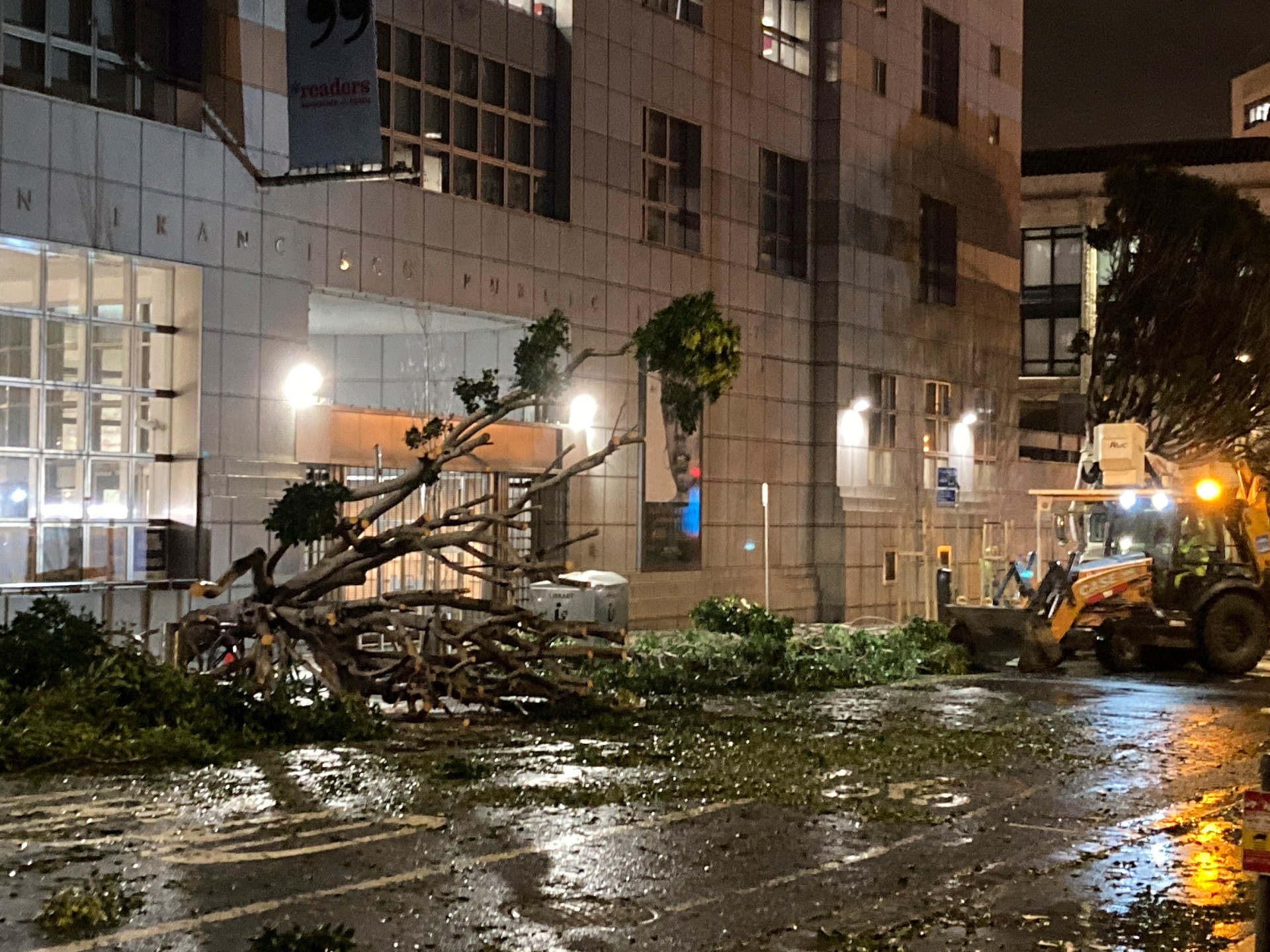Libraries address ‘gaps’ in California housing, weather response | Inequality News
Los Angeles, California – Terrae Irons had been mulling the possibility of completing a high school education in the hope of qualifying for a better-paying job in office management, but did not know where to start. Irons found the answer in a place many Californians have turned for help in difficult circumstances: the local public library.
After seeing posters at the San Francisco Public Library for an online programme where people could earn an accredited high school diploma, Irons decided it was time to give it a try. After 18 months, Irons finished the course and obtained her diploma.
“It was posted everywhere at the library, every time I went there. I liked the way the poster looked. You could take courses online, and since I have a job and bills to pay, that appealed to me a lot,” Irons told Al Jazeera over a recent phone call. “I feel proud of myself. There weren’t any shortcuts: You had to put in the work.”
But while libraries in the United States often serve as centres for education and literacy, California’s library network has faced a unique set of challenges in recent years. As the western state struggles with issues ranging from extreme weather to homelessness, library staff find themselves on the front lines, addressing a gamut of needs, from disaster relief to shelter.
“A lot of these programmes we offer are in response to gaps in existing services,” said Molly Wetta, library services manager at the Santa Barbara Public Library, along the central California coast. For Wetta, the situation raises the question of “why library workers are being asked to step up and fill those gaps”.
California is the state with the highest rate of homelessness in the country, according to a December report (PDF) released by the US Department of Housing and Urban Development. An estimated 30 percent of the homeless population in the US lives in California, with 171,521 people tallied on a single night.
And that population is expanding, as many Californians struggle with high costs of living relative to other parts of the country, resulting in housing insecurity and other issues. Between 2020 and 2022, the number of people experiencing homelessness in the state grew by 9,973.
That growth can sometimes drive public animosity. Last month, an art gallery owner in San Francisco went viral after a video showed him blasting a water hose at an unhoused woman sitting on the sidewalk in front of his business.
The incident resulted in a misdemeanour battery charge, with public officials denouncing violence against the homeless population. Library workers say similar situations can prompt some members of the community to seek respite in their institutions.
“Some patrons come here simply looking for a place where they can rest, but this is also a place where we do outreach,” said Leah Esguerra, a social worker supervisor at the San Francisco Public Library.
Both her institution and the Los Angeles public library system have hired full-time social workers who can help connect people with services, including housing. At the library, the internet also is free to use, restrooms are available, and electrical outlets allow visitors to recharge mobile devices.
But recent weather events have also amplified the demands on library staff like Esguerra. Last month, California was lashed by a series of nine “atmospheric rivers“, narrow bands of intense moisture that dropped record precipitation on many parts of the state.
Faced with weeks of landslides, downed power lines and flooding, libraries like San Jose’s West Valley Branch transformed into “overnight warming centres”, where residents could escape the storms.
Meanwhile, in San Francisco, Esguerra said that her library system helped connect unhoused patrons with a temporary shelter set up by city authorities, including a shuttle stopping for transport. “We probably sent about two dozen people,” she said.
The string of storms dumped an estimated 121 trillion litres (32 trillion gallons) of water on the state in the span of several weeks, leaving about 22 people dead. But addressing the state’s droughts and heat waves is just as essential, according to Karen Pickard-Four, the principal librarian at the Los Angeles Public Library.
A November report (PDF) from state scientists warned that climate change was intensifying both winter storms and drought, making extreme weather events more frequent and, therefore, more devastating. Heat waves have likewise doubled in parts of the state, according to the report.
From 2000 to 2021, California experienced “the driest 22-year period over the past 1,000 years”, the report explained, “part of what scientists call an emerging ‘megadrought’ era”.
When faced with hot, arid conditions, Pickard-Four said library services can be vital. “If you’re on the street and it’s 105 degrees and you can come rest, cool down, and have a cold glass of water, it can save your life,” she said.
During a deadly heatwave that enveloped the state in August and September, many libraries functioned as “cooling centres” where people without access to air conditioning could find respite from the scorching temperatures. Some libraries open similar facilities when the state’s notoriously fierce wildfires fill the air with ash and smoke.
While many of these services are geared towards low-income residents, Pickard-Four emphasised that libraries are available to help everyone, regardless of background.
“We serve the well-resourced and we serve the under-resourced,” she said. “The library is one of the last places where people can come without buying anything. We’re public servants, first and foremost.”




